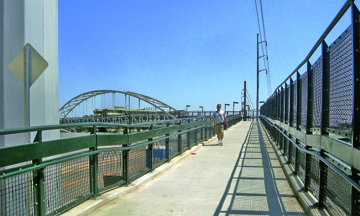
by Mark Smiley | Dec 17, 2015 | Travel
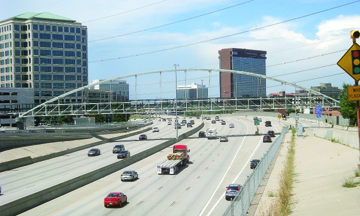 Residents Hate The Iconic Structure Designed To Gain Political Favor
Residents Hate The Iconic Structure Designed To Gain Political Favor
With Bike Advocacy Groups
A pedestrian and bicycle bridge that crosses over I-25 at Colorado Blvd. linking the area to the light rail station opened 16 years and $8 million after Denver initially contemplated the project. Since opening in July 2015 many are asking if the bridge is a benefit or boondoggle to an area that grew up in the golden age of automobiles?
As the neighborhood and surrounding business community has matured many are unsure whether being retrofitted for pedestrians, bicycles and public transit is a blessing. Developed mostly during the 1950s and 1960s, this established neighbor hood is an eclectic mix of single-family ranch homes, apartment buildings and townhomes, along with shopping centers and mid- to high-rise office buildings.
hood is an eclectic mix of single-family ranch homes, apartment buildings and townhomes, along with shopping centers and mid- to high-rise office buildings.
The initial reaction of many: They hate it! They are displeased and disturbed with the lack of parking spaces and believe the ramp is ugly. They are also unhappy with the increased noise and activity created by bicyclists and people going to and coming from work. Someone even wrote on the DownhomeDenver blog that there’s no reason for the bridge that was paid for with $4 million in City Capital Improvement Funds and $4 million in Federal Transportation Funds. Others, however, believe that the vast majority of residents other than the four or five buildings’ worth living at the base of the access ramp, approve of the bridge or have no opinion.
Taken For A Ride?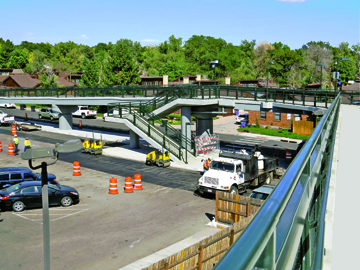
The north-south freeway previously separated inhabitants from the light rail link known as the Colorado Station. Now, however, the bridge connects the transit hub with Cherry St. and the Virginia Village neighborhood to the east. Access over I-25 is in the vicinity of Colorado Blvd. and East Evans Ave.
The bridge spans I-25, landing at Cherry St. to the north and RTD’s Colorado Station (light rail transit) to the south. The bridge was built to provide a safe way for bike riders and walkers to cross over I-25 without using Colorado Blvd., a street filled with rushing cars day and night. A biker named Bob stopped on the bridge by the Chronicle refused to give his last name but said he believes the bridge is worth every penny. He uses it fairly frequently now that he’s discovered it but can’t believe how few others do use it.
The bridge was theoretically built to increase connectivity to the Colorado Station, which boasted 5,600 arrivals and boarding per day prior to the bridge opening. That number hasn’t increased dramatically in the months since the opening. Only 2% of RTD’s ridership is by bike and at the Colorado Station that number hasn’t yet jumped appreciably. Most of those walking to the station don’t cross the bridge but are walking from the nearby parking lot.
Bicker With Bikers
For many the bridge also symbolizes the 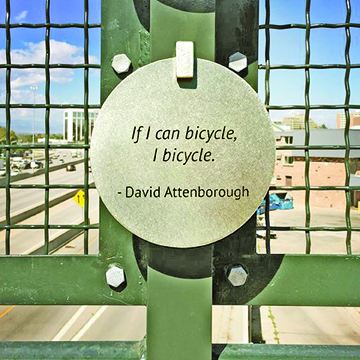 increasing squabble between motorists and bikers due to Denver’s policy of being hostile to automobile drivers and friendly to bikers. Denver drivers are constantly in a state of irritation due to the City’s implementing of Denver Moves Bicycles, a network plan of installing protected bike lanes, installing bicycle detection and signal upgrades that speed cyclists ahead while slowing down auto traffic.
increasing squabble between motorists and bikers due to Denver’s policy of being hostile to automobile drivers and friendly to bikers. Denver drivers are constantly in a state of irritation due to the City’s implementing of Denver Moves Bicycles, a network plan of installing protected bike lanes, installing bicycle detection and signal upgrades that speed cyclists ahead while slowing down auto traffic.
Road Diets — a plan being advanced by Denver’s Planning Department — entails converting four-lane undivided roadways to two-lane roadways. Furthermore the plan provides for a two-way left turn lane by removing a travel lane in each direction. The remaining roadway width is converted to bike lanes. Staunch bicycle supporters argue that these road diets actually reduce overall traffic. Bicycling is growing beyond just being a part of Denver Public Work’s and Parks & Recreation programs. Denver added three full-time individuals to the bike program in 2014 to help implement bicycle projects and improvements.
Motorists complain that cyclists ride on their merry way oblivious to drivers, don’t obey traffic lights or anything or everyone else that get in their way. “They don’t look around, don’t care about their own safety or those of the people they are distracting,” says Cherry Creek resident Latasha Curry.
Engineering & Art
Work on the bridge began on March 17, 2014, with initial construction focusing on fabrication and installation of the steel pedestrian railing on the main span over I-25 and the approach spans on either side of I-25. The arch was successfully set into place on the night of Jan. 16, 2015. The installation of the railing on the main span started on the west side of the bridge and progressed to the east. Project lighting followed the progress of the steel railing.
The high point to completion of the bridge was construction of the concrete deck. The concrete was poured into a 309-foot long truss — a little longer than a football field — and weighed close to 200 tons. That’s equivalent to about 18,700 gallons of concrete and required 10 concrete trucks and two big “pumpers” to pour concrete into the truss. The work often required full overnight closure of I-25 from Colorado Blvd. to Evans Ave.
Artwork titled A Mindful Bridge by North Carolina artists Jim Hirschfield and Sonya Ishii was installed on the bridge during the week of Sept. 29-Oct. 3, 2015. They are an array of shimmering circular stainless steel disks attached to the interior of the bridge. The disks contain quotes about the experiences of people walking or cycling while crossing a bridge. A Denver ordinance enacted in 1991 directs that 1% of any capital improvement project over $1 million undertaken by the City be set aside for the inclusion of art in the design and construction of those projects.
Catalyst For Growth
Construction of the bridge has become a catalyst for new development within the area and more is anticipated. Lincoln Property Company and ASB Real Estate Investments are building a new mixed use development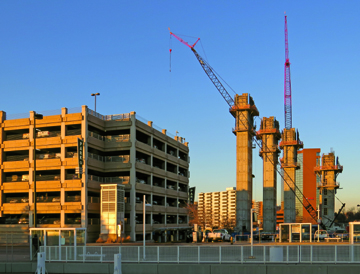 , adding more than 450,000 square feet of commercial and residential space to the nearby Colorado Center.
, adding more than 450,000 square feet of commercial and residential space to the nearby Colorado Center.
Real estate professionals suggest that the site has the potential to become Denver’s largest transit oriented development (TOD). Their point: With the light rail station plus the pedestrian-bicycle bridge, access to the site is unprecedented, creating a community center for the surrounding neighborhoods and I-25 corridor.
At the intersection of I-25 and Colorado Blvd. the additions will add 210,000 square-feet of office buildings plus a residential tower containing 189 apartments and 80 loft-style units. A 40,000 square foot Main Street retail section is also planned. The Center already features three office buildings plus the Dave & Busters-United Artists complex. New office space will add eight stories over five levels of parking. Retail space will be located within the residential development. Construction of the office space is expected to be complete in Dec. 2016 and the residential portion in mid-2017.

by Mark Smiley | Dec 17, 2015 | Main Articles
City Of Glendale Takes Extraordinary Measures
by Mark Smiley
While 2016 is the Year of the Rat in the Chinese calendar, the City of Glendale is trying to ensure that 2016 becomes the Year of No Rats in Glendale. Construction up and down Leetsdale Drive the last few years has disturbed rat nests — in both Denver and Glendale. An infestation of rats has dominated portions along Leetsdale Drive including North Glendale and 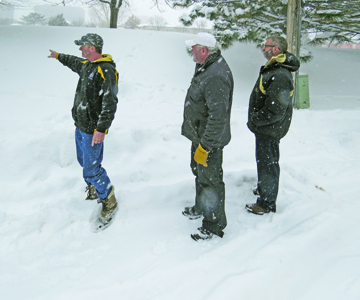 surrounding Denver neighborhoods. These demolitions, tear downs and new developments cause the rats to look for new havens. Rodents run to the nearby buildings, producing a deep howl of rage from the residents.
surrounding Denver neighborhoods. These demolitions, tear downs and new developments cause the rats to look for new havens. Rodents run to the nearby buildings, producing a deep howl of rage from the residents.
In a small city like Glendale a problem doesn’t take long to move up the food chain to the mayor of the city, Mike Dunafon. “Residents from complexes in North Glendale would approach me and call me informing me of the rat problem,” said Dunafon. “I realized we needed to take immediate action along with the Glendale Police Department. I even got calls from various complexes that are in Denver, but I had to refer those over to the appropriate persons in Denver.”
The reason the problem cannot be ignored or overlooked is because rats are dangerous. Besides being simply unpleasant, they are frequent carriers of many diseases. Dr. Matt Perzanowski, a professor at Columbia University’s Mailman School of Public Health, whose research is focused on understanding the exposures that lead to allergy and asthma, said that rats and mice have special protein that could be a culprit in allergic reactions and, though it is less studied, probably to asthma as well.
Rats like to live where people live. They quickly adjust to the neighborhood. Rats can thrive on just an ounce of food and water daily, so when they enter a neighborhood and gain access to meat, fish, vegetables and grains, they will stay. Rats prefer to feed in and around homes, restaurants and businesses. But they will settle for scraps from trash bags and cans, private yards and what they find at the community refuse disposal and transfer station. Rats get the shelter they need from tall weeds and grass, fences and walls, rubbish piles and abandoned appliances.
Rats move freely in and out of buildings in the neighborhood, so any steps that neighbors take to control rats will encourage them to move into a nearby building. A community effort works best, where everyone in the neighborhood takes steps at the same time to prevent rats from entering the buildings and to remove their food and shelter.
Managing rats comes down to three things: food, water and shelter. Eliminating these three goes a long way to solving  a rat problem. The City of Glendale’s goal is to make the necessary changes to remove food and eliminate harborage that is attracting rats to sites around Glendale and surrounding Denver neighborhoods.
a rat problem. The City of Glendale’s goal is to make the necessary changes to remove food and eliminate harborage that is attracting rats to sites around Glendale and surrounding Denver neighborhoods.
Currently, the City of Glendale has contracted with Checkmate Pest Control and its owner Russell Carter. “The rats are most likely coming from Cherry Creek and they are able to move freely up and down the creek,” said Carter. “They are very good climbers, jumpers, runners, and hiders. They multiply faster than rabbits so you have to be proactive like Glendale.”
Mayor Dunafon has worked with city officials including Josh Bertrand, Director of Public Works, to help North Glendale residents feel safe again. Their efforts over the last couple of months have paid off. Glendale Public Works and Checkmate Pest Control regularly monitor city parks and sites with trash p

roblems, potential nesting areas, and adjacent problem areas in order to prevent the rat population from becoming out of control.
“We have seen a significant decrease in the amount of rats,” said Dunafon. “We are removing them and residents are once again feeling like there is progress. I am proud of how Josh [Bertrand] has helped manage this problem.”
“The mayor and Officer [Korbie] Perkins were helpful in limiting the rat situation in the best matters that were within guidelines of the city,” said Ali Langworthy, Assistant Manager of Urban Phenix. “They are still working with us diligently to continue to help us to eliminate these little creatures as quickly and efficiently as possible.”
Cities such as New York hav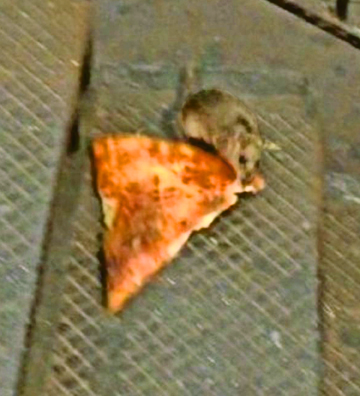 e been dealing with rats for hundreds of years. Fast forwarding to 2014, YouTube videos of rats on subway tracks and in a subway car in New York City went viral, as did videos of rats in a Dunkin’ Donuts in Manhattan. In June 2014, residents at adjacent Upper West Side buildings demanded an end to the rat problem they said had reached epidemic proportions, and started a rent strike.
e been dealing with rats for hundreds of years. Fast forwarding to 2014, YouTube videos of rats on subway tracks and in a subway car in New York City went viral, as did videos of rats in a Dunkin’ Donuts in Manhattan. In June 2014, residents at adjacent Upper West Side buildings demanded an end to the rat problem they said had reached epidemic proportions, and started a rent strike.
In 2015, another YouTube video of a rat carrying a slice of pizza in the subway went viral. Within 15 hours of the YouTube upload, the video was trending worldwide on Twitter and Facebook, and within two days, the video garnered five million views.
The City of Glendale is actively taking steps to make sure they do not end up the subject of a youtube video. The key to success is to preserve public safety and kill the disease carrying rats. Rodenticides are being used in this case and have been properly applied into the burrow systems so they cannot be reached by children and animals. The battle continues along Cherry Creek but the City of Glendale is taking strides to hopefully eliminate the problem completely.

by Mark Smiley | Dec 17, 2015 | Feature Story Middle Left
Primary Care, Urgent Care Or Emergency Room?
Choosing The Most Suitable Level Of Health Care
Is Key To Manage Your Health Care Costs
by Shideh Kerman, BS, MBA
Inappropriate use of health care raises medical costs for everyone. Many of us don’t know where to go for our health care needs. It is very common that people become confused with the difference of family practice, emergency rooms and urgent cares.
A study conducted by the National Center of Disease Control in 2011 found that 79.9 percent of adults visited the emergency room due to lack of access to other providers and not necessarily because of the medical emergent situation.
Anyone who has visited an emergency room knows that it can be very costly and it’s not always necessary to go to a ER. Walk-in clinics or urgent care clinics typically offer the equivalent medical attention in 30 to 60 minutes, while a hospital ER incurs a wait-time up to four hours. In addition the ER costs for the same procedure are about 4-5 times higher.
For example, the costs of being seen for an IV (intravenous) can vary widely, depending on where treatment is sought. The same diagnosis and treatment come with very different price tags (lab fees may be additional).
Typical family practices and convenience care clinics such as those at pharmacies cannot perform such procedures. Walk-in clinics offer these services for about $130-$195. In an urgent care the same procedure will cost $140-$250. If you choose to go to the ER, the cost will be highest at around $800-$1,200.
To clear up all of the confusion, here is an easy to follow guide that differentiates primary care provider office visits, urgent care visits and emergency room visits, so patients can be confident with the doctor visit they’ve chosen.
Primary Care Provider Office Visits
A primary care provider (PCP) is a family physician, who takes care of a patient’s basic needs across a wide continuum of different problems. He or she is the first point of contact for a person with a medical or health concern and gets to know the patient personally over time. The primary care provider cares about the patient’s whole health condition including aspects of preventative care such as immunizations, mammograms and colonoscopies. This provider makes sure the patient receives the proper care and coordinates with specialists as needed.
Primary care practices provide health promotion, disease prevention, health maintenance, counseling, patient education, diagnosis and treatment of chronic illnesses in a variety of health care settings such as office, inpatient, long-term care, home care, day care, etc,.
Primary care practices are usually not set up to see patients with acute illnesses or injuries, since most of them are not equipped with x-ray and in-house laboratory.
The copay of primary care provider visits are often the lowest copay defined on health plans. And that is why we encourage patients to visit their primary care provider if available. For some illnesses, if your symptoms come on gradually or you already know the diagnosis, such as a urinary tract infection, you may want to try to get a same day appointment with your primary care provider. While urgent care clinics or emergency rooms are always available, your primary care physician will have a better picture of your overall health for a more accurate diagnosis.
Urgent Care Visits
Urgent care clinics are walk-in clinics and can handle a variety of conditions that need to be treated right away but are not a life or limb threatening emergency.
“I can’t wait..it’s URGENT!”
An urgent care is an option for when primary care provider appointments are unavailable or if you need treatment outside of office hours. If you wait days or weeks for an appointment with your primary care physician, you run the risk of your condition getting worse and requiring more complex treatment.
In addition urgent care is also a good option for any acute illnesses and injuries since it offers x-ray and lab services in-house, which can provide the results within minutes and allow the provider to determine a more accurate diagnosis.
Urgent care bridges the gap between an injury that can’t wait for an appointment at the primary care physician and the life-threatening situation that calls for a trip to the emergency room. Built around patient convenience, urgent care clinics are often found with extended hours, and are sometimes even open on holidays. Although all clinics are different, you can sometimes find them where no appointment is necessary.
Some symptoms that can be treated at urgent care include:
- Fever without rash
- Minor trauma such as a common sprain
- Painful urination
- Persistent diarrhea
- Severe sore throat
- Vomiting
- Accidents and falls
- Sprains and strains
- Moderate back problems
- Breathing difficulties (i.e. mild to moderate asthma)
- Bleeding/cuts — not bleeding a lot but requiring stitches
- Diagnostic services, including X-rays and laboratory tests
- Eye irritation and redness
- Fever or flu
- Vomiting, diarrhea or dehydration
- Severe sore throat or cough
- Minor broken bones and fractures (i.e. fingers, toes)
- Urinary tract infections
Emergency Room Visits
According to the CDC (Centers for Disease Control and Prevention), “one in five Americans reports visiting an emergency room at least once in the past year.” Perhaps not surprisingly, the CDC points out that the most common reason for adults to visit the emergency room are injuries. This might explain why 35 percent of adult visits to the ER require x-rays.
Children, on the other hand, are more likely to make it to the emergency room as a result of cold symptoms. This is especially true in children under four years of age.
In general, an emergency condition is one that can permanently impair or endanger the life of an individual.
Some examples of most common conditions that require emergency medical care according to CDC include:
- Severe chest pain or difficulty breathing
- Compound fracture (bone protrudes through skin)
- Convulsions, seizures or loss of consciousness
- Fever in newborn (less than three months old)
- Heavy, uncontrollable bleeding
- Deep knife wounds or gunshot wounds
- Moderate to severe burns
- Severe abdominal pain
So when you’re sick or injured, deciding where to get care is the last thing you want to worry about. Understanding your options now will make decisions easier when you need care immediately.
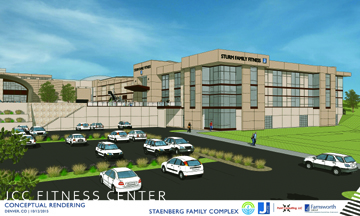
by Mark Smiley | Dec 17, 2015 | Main Articles
Hundreds Of Millions In New Developments In Glendale And Denver
 by Glen Richardson
by Glen Richardson
After more than two decades of coasting in idle, the portion of Leetsdale Drive that is in Glendale has shifted into overdrive. Spurred by Glendale’s growth plans, plus several ambitious adjoining construction projects in Denver, this major Cherry Creek Valley roadway is undergoing an amazing redevelopment renaissance.
Growth along this highway corridor appears to have shot out of the blocks following the redevelopment of the old Cub Foods location at Leetsdale and South Cherry Street by King Soopers. The site stood vacant 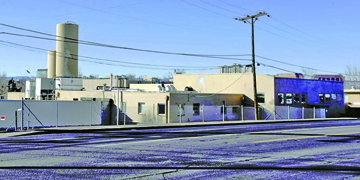 for over a half decade as the City of Glendale demanded a high end store and adjoining retail liquor establishment as a pre-condition to its approval of development plans. King Soopers unsuccessfully sued Glendale in Arapahoe County District Court prior to acceding to the city’s pre-conditions.
for over a half decade as the City of Glendale demanded a high end store and adjoining retail liquor establishment as a pre-condition to its approval of development plans. King Soopers unsuccessfully sued Glendale in Arapahoe County District Court prior to acceding to the city’s pre-conditions.
The highly successful new King Soopers store attracted other developers to the area. In mid-November Natural Grocers opened a new store at Alameda and Leetsdale at the old Gunther Toody’s location. Shortly thereafter the Greek Orthodox Church located at the intersection of Leetsdale and Alameda in Glendale agreed to a long-term land lease with the next- door JCC (Robert E. Loup Jewish Community Center) for property a long Leetsdale. That lease will allow the JCC (the J) to bulldoze its existing indoor tennis facility and rebuild it across Dahlia Street in Glendale.
long Leetsdale. That lease will allow the JCC (the J) to bulldoze its existing indoor tennis facility and rebuild it across Dahlia Street in Glendale.
With that lease agreement in place, the JCC is launching a $50 million three-to- four-year construction project with plans to build a half dozen new facilities. First to break ground will be a new Sturm Family Fitness Center along Leetsdale where the current tennis center is located. The 87,000-square-foot, three-story facility will be the largest in the metro area and will have two full size basketball courts plus an indoor running track. There will also be nine fitness studios for personal training, yoga, group exercise, CrossFit, Pilates and spinning. Also included will be a cardio room with mountain views plus a large weight room. In addition the project includes a café plus 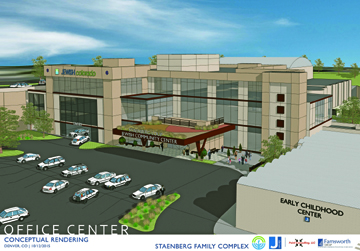 a 15,000 square foot outdoor field, lit for nighttime.
a 15,000 square foot outdoor field, lit for nighttime.
At virtually the same time period the 1.5 acres across Leetsdale that housed Four Mile Bar and a couple of homes was sold and redeveloped as a Rite Aid Pharmacy as well as a Noodles and Company restaurant.
Corridor Blossoms
With relocation of Natural Grocers to the Gunther Toody’s site in Glendale, the former location on Leetsdale Drive was purchased by Newberry Brothers for $2.4 million. The buyer has been in the greenhouse and florist business at 2nd Avenue and Garfield in Cherry Creek North for nearly 70 years. The company will use the 12,046-square-foot building on the site when it relocates to the 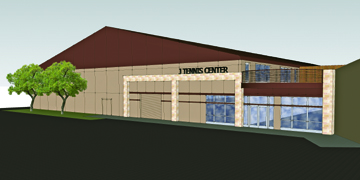 Leetsdale location later this year. The floral business also purchased the strip center at 5301-5307 Leetsdale Drive, directly adjacent to the former Natural Grocers property for an undisclosed price. That site has a roomy 1.36-acre lot that could be used for building another structure or additional parking.
Leetsdale location later this year. The floral business also purchased the strip center at 5301-5307 Leetsdale Drive, directly adjacent to the former Natural Grocers property for an undisclosed price. That site has a roomy 1.36-acre lot that could be used for building another structure or additional parking.
Paula Newberry-Arnold, daughter of Weldon and Elizabeth Newberry who started the firm, now co-owns the business with her son Kien. She has developed the business into one of the Valley’s top floral and décor shops specializing in a variety of large themed events along with daily custom floral designs.
Near the time period last year when the grocery property transactions took place, the Hilltop Retail Center at 5512 Leetsdale Drive sold for $7.05 million. Further east on the southwest corner of Leetsdale and Holly, the 4.42-acre Dillon Dairy site at 5512 Leetsdale Drive sold for $3,950,000. Southern Food Group’s Meadow Gold Dairy closed the milk processing, packaging and filling plant that once had annual revenue of more than $20 million and employed a staff of up to 40. Equipment in the plant was auctioned off in Sept. 2014. The unnamed buyer reportedly plans to redevelop that site into retail space and possibly add a self-storage facility. Current zoning and building codes allow for a three-story or 45-foot vertical structure.
Volley Of Growth
The JCC’s new year’s develo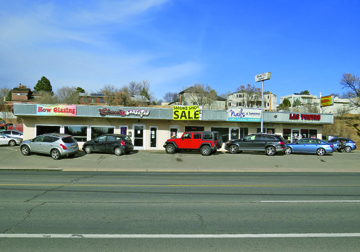 pment plan is also a driving engine for growth along Leetsdale. The J revealed it will construct a new Tennis Center on the currently vacant Greek Church property along Leetsdale.
pment plan is also a driving engine for growth along Leetsdale. The J revealed it will construct a new Tennis Center on the currently vacant Greek Church property along Leetsdale.
The new tennis center will be a climate controlled fabric and metal structure featuring six ATP-approved tennis courts plus a pro shop and locker rooms. There will also be a party deck and an indoor viewing area. Players and followers will have 100 dedicated parking spaces at the center across Dahlia Street.
The JCC also plans to build a functional, fun indoor-outdoor Aquatics Center. It will feature an “Outdoor Lazy River,” plus a zero entry pool with water slide. Also included will be an indoor family pool with water slide. An indoor six-lane lap pool plus a year-round outdoor four-lane lap pool will be included.
Family Focused
The JCC’s current Fitness Center will be changed into a Family Center allowing for increased children’s programming. It will feature a large gymnastics facility with raised viewing area. There will be two large rooms for celebrations and birthday parties plus eight summer camp rooms. Also planned is an Arts Center with designated space for pottery and other media. An indoor play area for children and two dance studios will also be added. The Mizel Arts & Culture Center currently located on the JCC campus will be renovated.
In addition a new Early Childhood Center — a key portion of the J’s business and mission — will be built. The new ECC will be constructed to licensing regulations and with best practices in mind. It will include 13 updated classrooms with a centralized and secure child drop-off area.
Among the final buildings set for construction is a two-story, 42,000-square-foot office building that will house the J’s administrative offices, JEWISHcolorado and other Valley Jewish agencies. This will allow for increased efficiencies, collaboration and economies between the organizations involved. The office building will house a parking garage for added accessibility. Also planned is a space for seniors to meet and socialize as well as a Beit Midrash (House of Study), accessible to the entire community for learning and meeting. The redeveloped property will add 250 wider parking spaces. Additionally, overflow parking for large events will be available across Dahlia at the new tennis facility. Information: 303-399-2660.
Traffic And Parking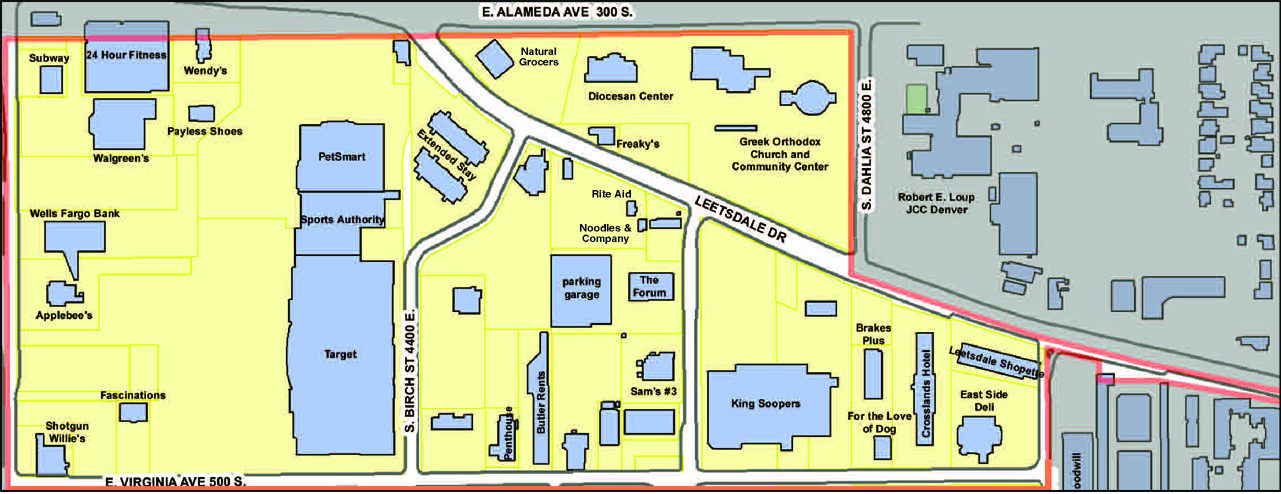
As with new developments along Colorado Boulevard and Cherry Creek North the new Leetsdale projects bring into question traffic and parking concerns. Glendale has much higher parking requirements than Denver and Glendale is generally unwilling to compromise on those requirements. In addition Glendale does consider and attempt to address traffic concerns which Denver, as a matter of public policy, refuses to consider or address. Glendale, in cooperation with the Colorado Department of Transportation, has demanded from developers land and easements to address concerns about traffic flow at the major intersection of Leetsdale Drive and South Cherry Street. To address general traffic levels on Leetsdale Drive as a whole will take Denver’s participation which at the present time Denver is not willing to undertake.

 Residents Hate The Iconic Structure Designed To Gain Political Favor
Residents Hate The Iconic Structure Designed To Gain Political Favor hood is an eclectic mix of single-family ranch homes, apartment buildings and townhomes, along with shopping centers and mid- to high-rise office buildings.
hood is an eclectic mix of single-family ranch homes, apartment buildings and townhomes, along with shopping centers and mid- to high-rise office buildings. increasing squabble between motorists and bikers due to Denver’s policy of being hostile to automobile drivers and friendly to bikers. Denver drivers are constantly in a state of irritation due to the City’s implementing of Denver Moves Bicycles, a network plan of installing protected bike lanes, installing bicycle detection and signal upgrades that speed cyclists ahead while slowing down auto traffic.
increasing squabble between motorists and bikers due to Denver’s policy of being hostile to automobile drivers and friendly to bikers. Denver drivers are constantly in a state of irritation due to the City’s implementing of Denver Moves Bicycles, a network plan of installing protected bike lanes, installing bicycle detection and signal upgrades that speed cyclists ahead while slowing down auto traffic. , adding more than 450,000 square feet of commercial and residential space to the nearby Colorado Center.
, adding more than 450,000 square feet of commercial and residential space to the nearby Colorado Center.












